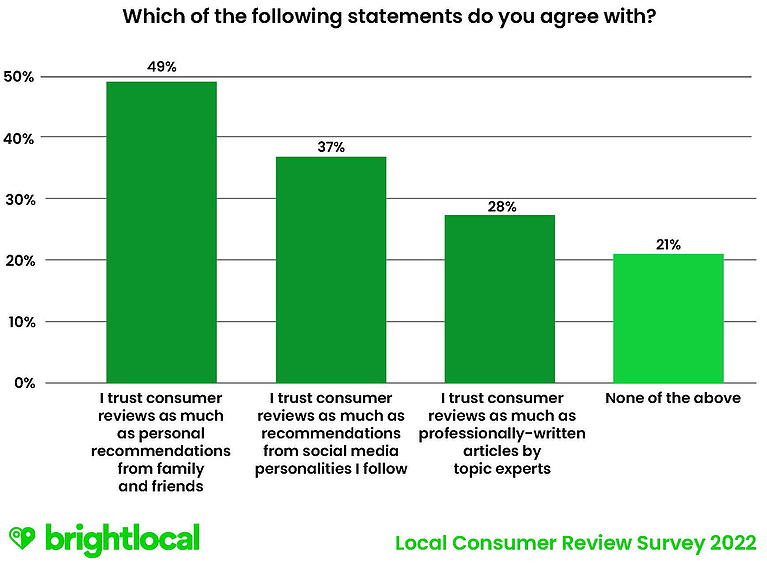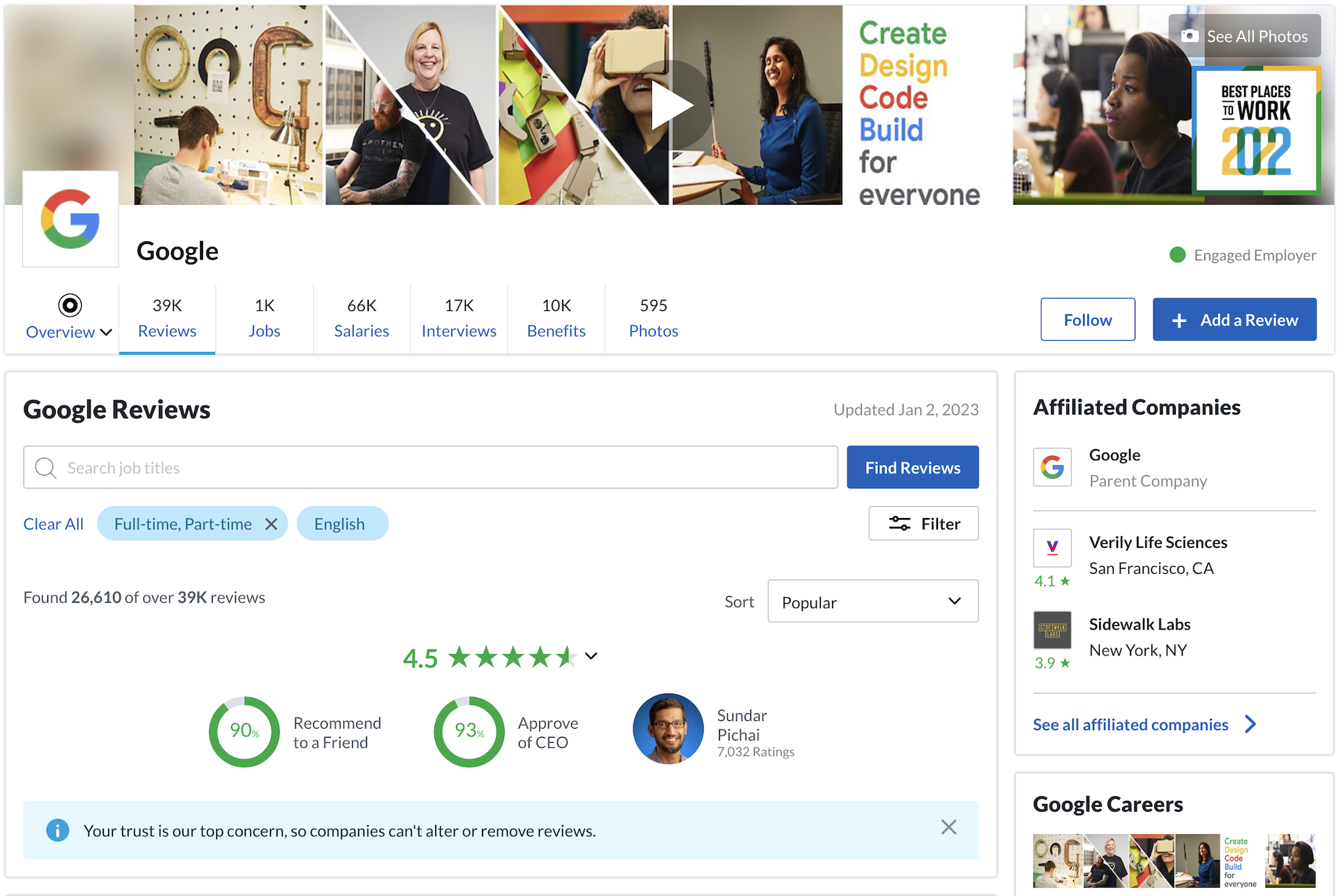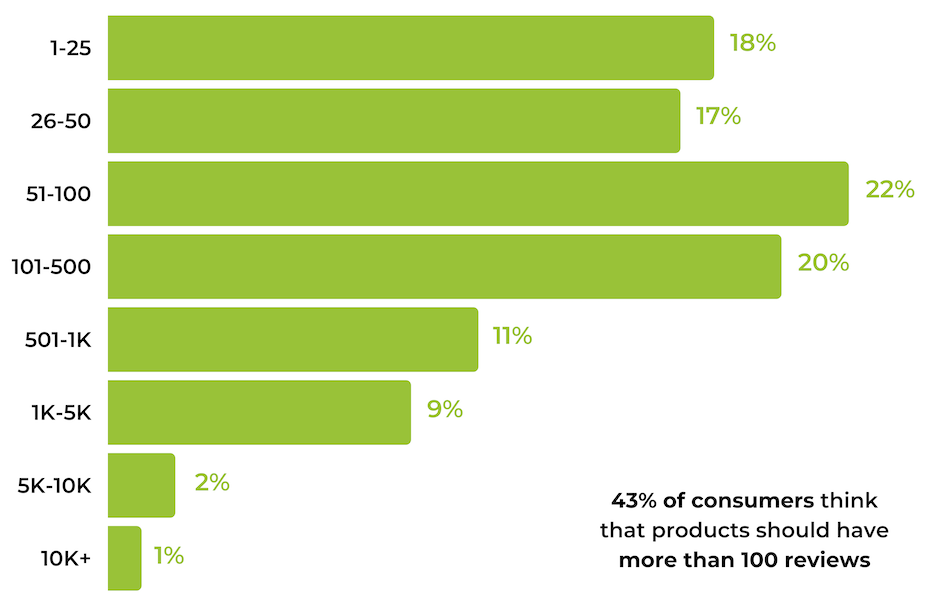Online reviews are an unavoidable part of doing business in today’s digital age.
Every marketer worth their salt knows that online reputation is everything.
Whether you own or manage a small mom-and-pop restaurant, a computer software company, or a chain of coffee shops, your customers are likely to look for you online.
That means one of the first things they’ll do is look for online reviews about your business.
Of course, positive reviews help you to create a trusted brand, which people are more likely to purchase from. However, how you respond to negative reviews also says much about your business.
Why Online Reviews Are So Powerful
Yelp, Google Business Profile, TripAdvisor, and similar are a boon for consumers, giving them a platform to learn about businesses before patronizing them.
For business owners? Not so much.
It seems that no matter how hard you try, you’re bound to get that one bad review that could potentially overshadow all your glowing reviews.
Online reviews, however, are an unavoidable part of doing business online.
For millennials, reviews are empowering, helping them make an informed and thought-out purchase decision (useful when deciding if a restaurant’s $15 avocado toast is worth it).
If you still aren’t completely on board, here are online review statistics that may change your mind.
1. Positive & Negative Reviews Influence Consumers
According to a 2021 report by PowerReviews, over 99.9% of customers read reviews when they shop online.
Furthermore, 96% of customers look for negative reviews specifically. This figure was 85% back in 2018.
When people look for bad reviews, they’re interested in knowing some of the company’s weaknesses. Where could they improve? If the downfalls are minor, it makes the researcher feel assured.
A near-perfect rating is often viewed as less credible and leads to consumer skepticism if reviews are too positive.
2. Consumers Trust Reviews Like Recommendations From Loved Ones
BrightLocal’s local consumer survey shows that 49% of consumers trust reviews as much as personal recommendations from friends and family members.
 Screenshot from BrightLocal, January 2023
Screenshot from BrightLocal, January 2023When you consider just how much we trust the people we love, it’s compelling to think that every 1 in 2 people trust online reviews as much.
However, the research reveals that some occasions cause consumers to suspect a review’s validity. So, you do need to be mindful of this.
Situations that can raise suspicion that a review may be fake include:
- The review is overboard in its praise (45%)
- The review is one of many reviews with similar content (40%)
- The reviewer uses a common pseudonym or is anonymous (38%)
- The review is overboard in negativity (36%)
- The review is one of only a few positive amongst many negative reviews (32%)
- The review contains hardly any text and is just a star rating (31%)
3. The More Reviews, The Better Reputation
 Screenshot from BrightLocal, January 2023
Screenshot from BrightLocal, January 2023BrightLocal’s research also found that 60% of consumers feel that the number of reviews a business has is critical when reviewing and deciding whether to use its services.
Although this has dropped since 2020, it’s still a high figure, especially compared to 2019, 2018, and 2017.
4. Most Consumers Don’t Trust Advertising
While online reviews are seeing a rise in consumer trust, the same can’t be said for traditional advertising.
According to Performance Marketing World, 84% of millennials don’t trust conventional advertising.
If anything, this finding is a sign of the times. People are tired of ads being pushed on their faces, especially ads that belie the truth of the quality of the products and services they get from brands.
5. Shoppers Research Product Reviews On Their Phones – Outside Of Your Store
OuterBox recently revealed that every 8 in 10 shoppers use their smartphones to look up product reviews while they are in-store.
Before buying an item, shoppers will quickly search to see what other people have had to say about the product in question.
Some will compare prices, determining whether they can find the item elsewhere cheaper.
This statistic shows how the online and offline worlds are becoming increasingly integrated. If you don’t have a good online review presence, it can have a negative impact on the number of sales you make in-store.
6. Reviews Shared On Twitter Increase Social Commerce
Yotpo has revealed that reviews on social media platforms increase social commerce, especially on Twitter. You can see this displayed in the chart below:
 Screenshot from Yotpo.com, January 2023
Screenshot from Yotpo.com, January 2023When we think of social media, we associate it with building brand awareness. However, it’s also effective for driving sales.
Shopify recently published a survey that revealed the average conversion rate for the social media websites represented in the graph above:
- The average conversion rate for LinkedIn is 0.47%
- The average conversion rate for Twitter is 0.77%
- The average conversion rate for Facebook is 1.85%
Yotpo Data found that when reviews are shared on social platforms, the conversion rate is 5.3 times higher for LinkedIn, 8.4 times higher for Twitter, and 40 times higher for Facebook.
All these statistics show us that reviews are an incredibly powerful form of social proof that results in higher conversion levels across LinkedIn, Twitter, and Facebook.
Furthermore, a lot of the eCommerce world is underestimating Twitter’s force.
7. Reviews Are Just As Important Among Jobseekers
If you thought consumers were the only ones concerned about reviews, think again.
Research published by Glassdoor indicates that 86% of employees and job seekers research reviews on a business and ratings to determine whether they should apply for a job.
 Screenshot from Glassdoor.com, January 2023
Screenshot from Glassdoor.com, January 2023As competition for talent in certain industries gets tougher, companies will have no choice but to be more conscious about their employer brand if they wish to attract top talent.
8. 3.3 Stars Is The Minimum Rating Customers Accept
When deciding whether to engage with a business, it has been indicated that 3.3 stars out of 5 are the lowest rating customers are likely to consider.
If you have a lower rating than this, your business may be overlooked and lose valuable consumers to the competition.
It probably does not come as a shock to discover that only 13% of consumers will contemplate using a company with a rating of 2 stars or less.
9. Sustainability Is A Recurring Theme In Travel Reviews
The Expedia.com Travel Recovery Trend Report revealed that the environment and sustainability are two chief themes for online guest reviews.
Some of the terms most typically found in reviews include the following:
- Renewable energy
- LED light bulbs
- Electric car charging
- Single-use plastics
- Recycling
Expedia believes that millennial and Gen-Z travelers are more likely to consider environmentally friendly travel options.
10. 18 – 34 Year Olds Trust Online Reviews as Much as Personal Recommendations
Research shows that 91% of 18 to 34-year-olds trust reviews online just as much as personal recommendations.
Let’s think about this for a second: we’re now trusting online comments just as much as we trust feedback from the people we know and love.
This shows how much high regard millennials and Gen Z give to online reviews.
11. Tiny Subject Line Changes Can Get More Reviews
When soliciting reviews, most businesses send an email post-purchase.
Yotpo studied the subject lines of 3.5 million of these post-purchase review request emails to discover what works and what doesn’t when asking customers for reviews.
While this is much more than a single statistic, here is a synopsis of the top subject line tweaks to get more reviews:
- An emotional appeal doesn’t greatly impact the review response rates.
- Include your store name to increase reviews.
- Incentives inspire more reviews in every industry.
- Ask a question in the subject line.
- Exclamation points boost reviews for food and tobacco businesses!
- Avoid using a totally uppercase word in your subject lines.
12. Reputation Management Software Pays For Itself
Podium released a very interesting report on online reviews, stating that 94% of local companies who utilize a reputation management tool make up for the cost with the ROI.
How your company appears online massively dictates what shows up in terms of your bottom line.
Because of this, companies are investing more in their reputations than ever before.
One way they do this is by investing in reputation management software. This gives them the ability to have clarity regarding how their business is reviewed online.
13. Customers Believe A Product Should Have 100+ Reviews
Power Reviews recently posted interesting statistics about the number of reviews shoppers want.
In a perfect world, 43% of consumers have indicated that they want to see more than 100 reviews for an item.
Take a look at the table below to see consumer expectations regarding review volume:
 Screenshot from PowerReviews.com, January 2023
Screenshot from PowerReviews.com, January 2023Consumers indicate that a notably high volume of reviews can have a big, positive impact on their purchase likelihood.
Out of those surveyed, 64% indicated that they would be more likely to purchase an item if it had over 1,000 reviews than if it only had 100 reviews.
Furthermore, 54% are more likely to purchase an item if it has 10,000+ reviews compared to 1,000 reviews. So, more is always better when it comes to quantity.
14. Few Travelers Post Unsolicited Online Hotel Reviews
BrightLocal has also uncovered that 78% of travelers never post unsolicited online hotel reviews. This means you cannot simply rely on customers to post hotel reviews of their own free will. They need to be encouraged to do so.
Customers say that the main ways they have been asked to leave a review are as follows:
- Via email (41%)
- During the sale/in-person (35%)
- When receiving an invoice or receipt (35%)
- SMS text (27%)
You need to be mindful of how you approach customers when asking to leave a review. The last thing you want to do is come across as pushy. At the same time, you want to make customers feel compelled to post a comment.
Offering an incentive, such as a special discount or entry into a competition, is a good approach.
15. Consumers Are Becoming Increasingly Suspicious Of Facebook Reviews
While online consumers rely on reviews to make purchasing decisions, they’re also suspicious of fake reviews. In fact, 93% of Facebook account holders are suspicious of fake reviews on this social media platform.
 Screenshot from Brightlocal, January 2023
Screenshot from Brightlocal, January 2023As you can see from the table, only 7% of users don’t feel at all suspicious about Facebook reviews.
Users also have low trust in Google, Yelp, and Amazon reviews.
16. Most Consumers Use Rating Filters
Did you know that 7 in 10 consumers utilize rating filters when looking for companies?
Out of all the different rating options, the most popular is to narrow down a search based on the rating it is, for example, to only show hotels with ratings of four stars or above.
This helps customers only view products, locations, and services that fall within their standards. No one wants to waste their time on things that don’t fit!
17. Customers Expect You To Respond To Negative Reviews Within 7 Days
When customers post negative reviews about a business, they expect a response. Not only this, but they don’t want to wait around for it.
Review Trackers have stated that 53% of customers expect companies to respond to negative feedback within one week.
One in three consumers has a shorter timeframe than this; three days or less.
Therefore, you really need to ensure you’re keeping up with the reviews you receive and responding appropriately.
18. Your Response To A Review Can Change How Customers View Your Business
Podium’s 2021 State of Reviews publication revealed that 56% of consumers had changed their perspective on a business based on how they responded to a review.
We know that it can make you feel sick to your stomach when you receive a bad review from a customer. However, this statistic shows that there is the potential to turn this into a positive.
If you respond empathetically and try to understand the customer, they will feel like you really care about them and the service they receive. You can turn an unsatisfied customer into a loyal one.
And, even if the consumer who has complained does not reply, the fact you’ve tried to rectify their grievance will show your business in a positive light when others read the review.
The Bottom Line On The Impact of Online Reviews
These statistics reveal one unavoidable truth: online reviews are important and are here to stay.
Simply put, online reviews are directly linked to consumer trust and creating social proof.
Rather than fear them, you should look at them as a way to get a direct line to your customers.
If you are yet to begin your efforts to manage your online reputation, now’s as good a time as any to get started by doing the following:
- Educate your customers on the importance of leaving reviews, but make sure to communicate that these reviews will help you improve your business, which can only be a good thing for them.
- Take charge of your brand on all review platforms. Respond to feedback and make sure complaints are managed in a timely and orderly fashion.
- Claim your Google Business Profile to ensure that any information about your business on Google is accurate and updated.
- Ask and encourage your customers to leave a review of your product or service.
More resources:
Featured Image: ParinPix/Shutterstock
Source link



